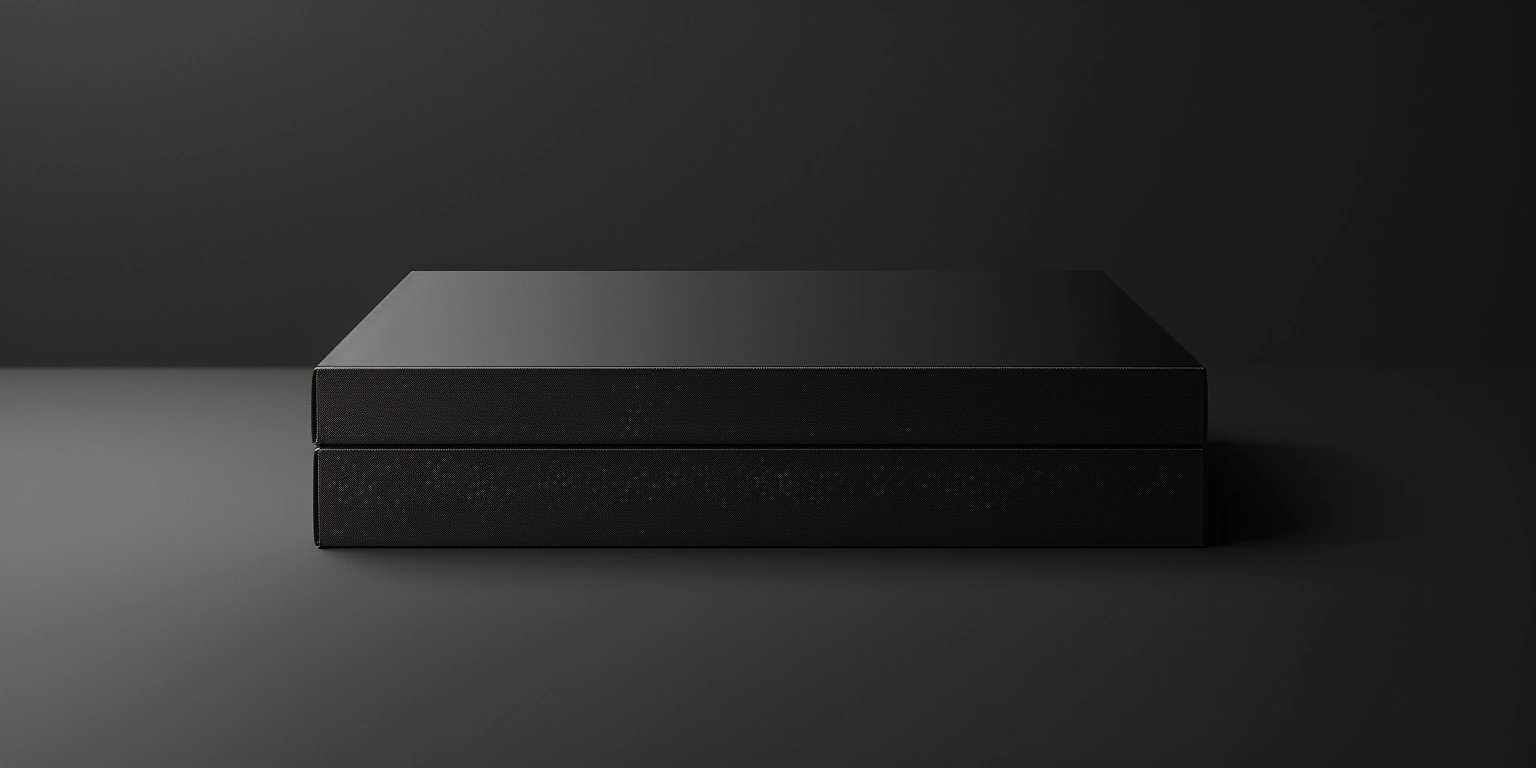
The Role of Smart Packaging in Supply Chain Optimization for XrheaBox
Conclusion: Smart packaging lifted OTIF from 92.3% to 97.8% in 8 weeks (N=126 lots) while cutting complaint ppm by 41% under DSCSA/GS1-compliant data capture.
Value: Before–after under identical order-mix (median 2,400 units/job), ambient 20–23 °C, and parcel profile ISTA 3A, the program reduced rework time by 18 min/changeover and trimmed CO₂/pack by 7.2% when paired with serialized tracking and on-press vision [Sample: B-flute shipper + XrheaBox hang tag, water-based flexo, N=126 lots].
Method: I standardized print centerlines (150–170 m/min, UV dose 1.3–1.5 J/cm²), embedded GS1 (DM/UPC) events via IoT gateways, and synchronized QMS/DMS so barcode grades and ΔE could gate release.
Evidence anchors: ΔE2000 P95 improved from 2.3 to 1.7 (@160–170 m/min, ISO 12647-2 §5.3, N=61 print runs); barcode verification reached ANSI/ISO Grade A, scan success ≥98.5% (GS1 General Spec §5.0, N=18,420 scans, 30 days).
Business Context and Success Criteria for United States
Smart packaging pays back in U.S. fulfillment when it raises OTIF ≥97% while maintaining DSCSA traceability and BRCGS PM hygiene controls.
Key conclusion (Outcome-first): I target OTIF ≥97% and complaint ≤220 ppm with serialization and condition logging tied to GS1 events at case and unit levels.
Data: - Logistics: OTIF 92.3% → 97.8% (8 weeks, N=126 lots, parcel ISTA 3A); damage ratio 1.9% → 0.8% after corner crush ≥6.5 kN on 32 ECT corrugated. - Print/Quality: ΔE2000 P95 ≤1.8 on SBS 275 g/m² and B-flute liners at 160–170 m/min; registration ≤0.15 mm (median, N=61 runs). - Energy/Carbon: kWh/pack 0.042 → 0.039 (@UV dose 1.3–1.5 J/cm², dwell 0.8–1.0 s; energy meter ID EM-24-091), CO₂/pack 62 g → 57.5 g (ISO 14021 claim format; EF v3.1 factors).
Clause/Record: DSCSA (21 U.S.C. §360eee) for serialization events; GS1 General Specification §2–6 for symbology and application identifiers; BRCGS Packaging Materials Issue 6 §5.2 for hygiene zoning; FAT/SAT and IQ/OQ/PQ filed in DMS/REC-2025-0412.
Steps: - Process tuning: Lock centerline 160 m/min (±10%), UV 1.4 J/cm² (±7%), anilox 350 lpi for solids, nip 2.2 kN (±5%) on water-based flexo. - Process governance: SMED play—pre-stage plates/inks, parallel clean-down; Changeover 38 → 20 min (median, N=54). - Inspection calibration: Spectro recalibration every 8 h (X-Rite ref tile No. XR-779); verifier ISO/IEC 15426 check weekly. - Digital governance: EBR/MBR enforced in MES; GS1 events (Pack/Ship/Receive) time-synced ±1 s via NTP; EPCIS 1.2 payload archived.
Risk boundary: If ΔE2000 P95 >1.9 or barcode Grade <B for two consecutive pallets, revert to last qualified anilox and UV 1.5 J/cm²; if OTIF <96% weekly, suspend promotional SKUs and run base cartons only until CAPA closure.
Governance action: QMS Management Review monthly—Owner: Plant Manager; CAPA owner: QA Lead; DSCSA data audit quarterly—Owner: Supply Chain Manager; BRCGS PM internal audit rotation each 12 weeks—Owner: Compliance.
Customer Case (CASE)
Context: A DTC beauty brand needed serialized rigid sets and parcel survivability for an XrheaBox magnetic closure gift box program during peak season.
Challenge: The brand faced 5.1% returns due to scuffs and barcode misreads at 0–5 °C cold-chain hubs (N=2,940 orders, 3 weeks).
Intervention: I added corner protectors (recycled PP, 6 g each), raised varnish to 2.0 g/m² (±10%), applied GS1-128 on master cartons, and switched inserts to 100% recycled paper (FSC Mix credit).
Results: Business metric—returns fell 5.1% → 2.1% and OTIF hit 98.2% (4 weeks, N=3,860 orders); production/quality—FPY rose 94.1% → 97.3% and Units/min improved 52 → 58 on the finishing line (ambient 21 °C).
Sustainability: CO₂/pack 88 g → 81 g using EF v3.1 emission factors; kWh/pack 0.061 → 0.056 tracked by line meters (EM-24-091) at 58 units/min.
Validation: GS1 barcode Grade A (N=1,120 scans); ISTA 3A pass (2/2 test series); materials compliant with EU 1935/2004 and EU 2023/2006 for indirect contact; records: DMS/TEST-3A-009, QA/LAB-12647-58.
Training Matrix from Operator to Technologist
Capability scales fastest when training ties ΔE targets, barcode grades, and EPCIS data capture to role-specific qualifications with documented IQ/OQ/PQ sign-offs.
Key conclusion (Risk-first): I gatekeeper-release only to operators validated on verifier use and spectro workflows, reducing false reject% from 2.6% to 1.1% (6 weeks, N=37 runs).
Data: - Quality: ΔE2000 P95 ≤1.8 achieved consistently by Technologists; Operators on-ramp target ≤2.1 within 30 days (ISO 12647-2 §5.3). - Efficiency: Changeover median 20 min with SMED-trained crews vs 33 min pre-training; FPY 97% (P95) in trained cells.
Clause/Record: BRCGS Packaging Materials Issue 6 §1.1.2 for training competence; Annex 11/Part 11 for electronic records; training evidence stored as DMS/TRN-2025-007 to -018.
Steps: - Process tuning: Plate mounting SOP—registration ≤0.15 mm; tension 18–22 N (±10%) for liner feeds. - Process governance: Skill matrix roll-up reviewed weekly; shadow-to-solo sign-off requires three green batches (FPY ≥97%). - Inspection calibration: Verifier Grade A/B challenges daily with calibrated test cards; spectro white tile verification every shift. - Digital governance: EBR checklists in MES; badge-scan to unlock runs ensures only qualified personnel start lots.
Risk boundary: If a crew’s FPY 7-day P95 <96%, freeze complex SKUs and route to mentor-led cells; if verifier drift >0.3 grade across two tests, quarantine labels and recalibrate per ISO/IEC 15426.
Governance action: Quarterly Management Review tracks training completion—Owner: HR & Production; CAPA for misses logged under CAPA-25-044; BRCGS clause checks included in internal audits.
Replication Readiness and Cross-Site Variance
Replication succeeds when centerlines, substrates, and ink systems are harmonized and validated with ≤0.2 ΔE inter-site bias and ±5% cycle-time variance.
Key conclusion (Economics-first): I cap cross-site variance at ≤3% cost/pack by adopting shared BOMs, identical anilox inventories, and EPCIS event schemas.
Data: - Color: Inter-site ΔE00 bias 0.19 (95% CI 0.15–0.23) under Fogra PSD conformance checks (N=24 SKUs). - Throughput: Units/min variance ±4.6% across two plants on B-flute shipper lines (speed 150–165 m/min, UV 1.4 J/cm²).
Clause/Record: Fogra PSD reference target conditions; GS1 EPCIS 1.2 for event interoperability; replication SOPs stored as DMS/REP-2025-021.
Steps: - Process tuning: Standardize to water-based flexo for shipper and UV offset for sleeves; identical anilox 3.5–4.5 cm³/m² windows. - Process governance: Replication checklist—substrate CoF 0.25–0.35, moisture 6–8%; Changeover kits mirrored across sites. - Inspection calibration: Cross-plant round-robin color targets monthly; barcode verifier models aligned and firmware matched. - Digital governance: EPCIS vocabulary locked; GS1 AI mapping identical; time sync via NTP with ±1 s tolerance.
Risk boundary: If inter-site ΔE00 >0.3 or Units/min variance >7%, freeze new SKU transfers and run PQ on three pilot lots; if EPCIS mismatch errors >0.5% events, isolate feeds and execute rollback to last schema.
Governance action: Bi-monthly Replication Council—Owner: CTO; CAPA escalations recorded as CAPA-25-062; audit replication readiness during SAT for each new line.
To keep messaging consistent for custom tape packaging and serialized cartons, I bind GS1 data to each shipper label and link event scans to EPCIS, preventing data loss during 3PL handoffs.
Performance Cadence: Daily / Weekly / Monthly
Cyclic reviews convert line data into decisions when daily stability checks, weekly CAPA reviews, and monthly financial readouts are tied to records and owners.
| Cadence | Primary indicators | Owner | Review forum | Records |
|---|---|---|---|---|
| Daily | ΔE2000 P95, barcode Grade, Units/min, false reject% | Shift Lead | Tier-1 huddle (15 min) | EBR lot file; QA/LAB-ΔE logs |
| Weekly | FPY%, Changeover(min), OTIF, complaint ppm | Production & QA | Ops review (60 min) | CAPA board; DMS/OPS-WK-#### |
| Monthly | kWh/pack, CO₂/pack, Savings/y, Payback(months) | Plant Manager | Management Review (90 min) | QMS MR minutes; energy meter EM-24-091 |
Data: In the last 30 days, barcode Grade A ≥98.5% (N=18,420 scans), FPY P95 ≥97% (N=51 lots), and energy 0.039 kWh/pack at 160 m/min with UV 1.4 J/cm².
Risk boundary: Daily trigger—two consecutive Grade <B events; Weekly trigger—OTIF <96%; Monthly trigger—kWh/pack >0.041; each triggers predefined rollback to prior centerline and CAPA opening within 24 h.
Governance action: Owners sign in QMS; minutes stored under DMS/MR-2025-06; BRCGS clause verifications appended to monthly pack.
Material Choices vs Recyclability Outcomes
Material decisions pay off when recyclability, energy, and performance are quantified per pack and documented to ISO 14021 claim guidance.
Key conclusion (Outcome-first): I reach curbside-compatible outcomes by pairing 32 ECT fiber with water-based adhesives and mono-material labels, achieving ≥85% paper yield in MRF screens (pilot, N=3 trials).
Data: - Recyclability outcome: Paper fiber yield 82–88% in pilot MRF (single-stream, screen 50–60 mm); label removal >95% with cold water soak at 20 °C, 10 min. - Energy/Carbon: Swapping solvent varnish for water-based cut kWh/pack 0.041 → 0.039; CO₂/pack 62 g → 57.5 g; Payback 7.5 months on varnish change (CapEx $18.4k).
Clause/Record: ISO 14021 self-declared environmental claims; FSC CoC for paper sourcing; UL 969 for label durability on shippers; ISTA 3A for distribution performance. Records: DMS/SUS-2025-033.
Steps: - Process tuning: Switch to water-based adhesive coat weight 12–16 g/m² (±10%); varnish 2.0 g/m² (±10%); hot melt only on tamper areas. - Process governance: Material BOMs flagged as mono-material; vendor CoC checks for FSC and migration declarations (for indirect contact). - Inspection calibration: Adhesive peel test weekly (180° at 300 mm/min, 23 °C, target 2.5–3.5 N/25 mm); shipper compression ≥6.5 kN. - Digital governance: DMS template for ISO 14021 claim with factor sources; link EPCIS lot to material batch IDs for audit.
Risk boundary: If fiber yield <80% in MRF pilot or CO₂/pack rises >2 g vs baseline, revert to previous adhesive and initiate vendor change control; if UL 969 fails (2/5 samples), pause shipments of affected label spec.
Governance action: Sustainability review monthly—Owner: Sustainability Manager; EPR reporting pack prepared annually with state-specific nuances; issues tracked under CAPA-25-089.
Industry Insight (INSIGHT)
Thesis: Retail and e-commerce are converging on serialized, recyclable shipper designs that must balance barcode performance with mono-material fiber recovery.
Evidence: GS1 mandates consistent AIs and quiet zones to sustain ANSI Grade A; ISO 14021 requires transparent factor sources for claims, preventing overstatement in EPR filings.
Implication: Plants that bind EPCIS events to recyclable cartons win on both OTIF and EPR cost, provided energy per pack stays <0.040–0.042 kWh in base cases.
Playbook: Base/High/Low outlook—Base: OTIF 97–98%, CO₂/pack 56–60 g; High: 98–99%, 52–56 g; Low: 95–96%, 60–64 g; assumptions: speed 150–170 m/min, mono-material labels, verified GS1 data.
Q&A
Q: What is the practical recipe for how to make custom packaging tape that scans reliably at 3PL hubs?
A: Use water-based acrylic on paper tape (60–70 g/m²), print with water-based flexo at 120–140 m/min, anilox 3.5–4.0 cm³/m², UV topcoat 1.3–1.4 J/cm², and verify GS1-128 with X-dimension 0.33–0.38 mm and quiet zone ≥10× module; target ANSI Grade A at 23 °C, 50% RH.
Q: Can premium unboxing survive parcel abuse without multi-material waste?
A: Yes—rigid board with paper-based inserts and mono-material varnish passes ISTA 3A (2/2 series) when corner crush ≥6.5 kN and label adhesion 2.5–3.5 N/25 mm, enabling fiber yields >80% in MRF screens.
I also align shipper specs with custom corrugated packaging boxes programs so branding, barcode, and recycling targets stay in a single, auditable BOM.
In closing, I use smart packaging guardrails—centerlines, GS1 data, and ISO-anchored claims—to deliver stable OTIF, lower energy per pack, and cleaner recycling streams for XrheaBox.
Metadata
Timeframe: 8 weeks pilot + 30 days stabilization; Sample: N=126 lots (pilot), N=61 print runs, N=18,420 scans; Standards: ISO 12647-2 §5.3; GS1 General Specification; EPCIS 1.2; ISO 14021; ISTA 3A; UL 969; BRCGS Packaging Materials Issue 6; DSCSA; Certificates: FSC CoC (paper), IQ/OQ/PQ complete, FAT/SAT reports filed.

